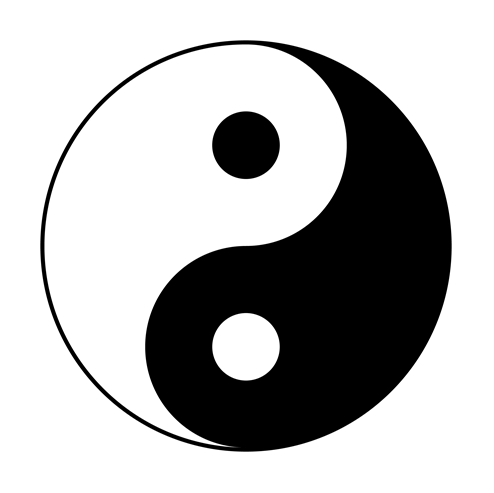Background
Taoism is the English name that covers a variety of Chinese religious and philosophical beliefs. This religion has a very long history, and has influenced the development of a variety of modalities used in health and healing, from macrobiotic diets to electroacupuncture.
Taoism is sometimes used to describe various Chinese folk religions. Many of the estimated 225 to 400 million individuals called Taoists would not identify themselves as followers of this religion. Though Taoists may have very different and conflicting belief systems, which vary by social group, there are spiritual and philosophical commonalities that they all share. This group of belief systems, collectively known as Chinese medicine, has influenced the development of meditative, exercise, and medical practices for over 2,000 years. The primary uniting factor among all Taoists is the belief that the human body is a microcosm of the universe, which means that the forces that influence the events of the outside world also work on a smaller scale within each person. Taoists believe that energy flows through the universe and that a willingness to be flexible to the forces that drive the universe inside as well as outside of the body is the most important means of maintaining health and wellbeing.
The ancient Chinese philosophy of Taoism provided the basis for the development of Chinese medical theory and has influenced the development of various healing practices and modalities including Asian bodywork, acupressure, acupuncture, acustimulation, chi kung, cupping, electroacupuncture, energy-based bodywork, macrobiotics, moxibustion, feng shui, meditation, qi gong, tai chi, shiatsu, taiji, tuina, traditional Chinese medicine, and various martial arts.
Taoism is not considered a mode of healing, but a thought system of attuning one's self to exist in the rhythms of the life force or "qi."
Effectiveness Effectiveness definitions
Taoism is a whole system of religious and philosophical beliefs which has influenced many healing practices. See specific health and wellness topics with foundations in Taoism for effectiveness information.
Natural Medicines rates effectiveness based on scientific evidence according to the following scale: Effective, Likely Effective, Possibly Effective, Possibly Ineffective, Likely Ineffective, Ineffective, and Insufficient Evidence to Rate.
Dosing & administration
Adverse effects
Interactions with pharmaceuticals
None known.
Interactions with herbs & supplements
None known.
Interactions with foods
None known.
Interactions with lab tests
Interactions with diseases
Mechanism of action
According to Taoist philosophy, nature and the laws that govern the on-going harmonious flow of life energy through the natural world are used to better understand the body and health. Each person is viewed as an ecosystem that is embedded in and related to the larger ecosystem of nature and is thus believed to be subject to the same laws.
The life force, chi (qi), is believed to circulate through the body and enliven it. Health is seen as a function of a balanced harmonious flow of chi, and illness results when there is a blockage or an imbalance in the flow of chi. Yin and yang are opposite and complementary qualities of life energy (chi); yin is regarded as the feminine principle, and yang the masculine principle.
The human being is thought to have a system of pathways called meridians (also sometimes called channels) through which chi flows. The body has been mapped with these meridians, which pass through all its organs, and specific meridians correspond with specific organs or organ systems (also called organ networks). Health is believed to be an ongoing process of maintaining balance and harmony of the circulation of chi through all the organs and the systems of the body.
Symptoms are regarded as signals of impaired flow or circulation of chi through the body and are considered as part of a larger picture or pattern affecting the whole person. The practitioner seeks to connect seemingly unrelated symptoms and come up with a unifying explanation. This unifying explanation uses a unique diagnostic system that incorporates every symptom into a diagnosis.
Harmony and disharmony are understood in two main conceptual frameworks: the eight principles and the five elements.
The eight principles are actually four pairs of complementary opposites describing patterns of disharmony within the person. These pairs are not always important in Western medicine, but in healing systems influenced by Taoism, these details provide clues as to the flow of qi in the patient's body. The eight principles are: interior/exterior, referring to the location of the disharmony in the body (internal organs vs. skin or external qi); hot/cold, referring to qualities of the disease pattern (such as fever or thirst vs. chilliness or desire to drink warm liquids); full/empty, referring to whether the condition is acute or chronic, and whether the body's responses are strong or weak; and the balance of yin/yang. The eight principles are the theoretical basis of all Taoist-influenced modalities.
The five element theory is the basis of the approach called traditional acupuncture (also referred to as classical or five element acupuncture). The five elements are fire, earth, metal, water, and wood. These terms do not refer to basic constituents of matter, but are seen as dynamic qualities of nature and are used to describe the changing qualities of chi energy as it circulates through the person.
The body is thought to have five organ networks, each corresponding with a particular element: heart/small intestine with fire, spleen/stomach with earth, lungs/large intestine with metal, kidneys/bladder with water, and liver/gall bladder with wood. The organ networks are named for the common meridian or energy pathway that circulates through and connects the organs, as it circulates chi throughout the larger body-wide meridian system. The organ systems of Taoist-influenced modalities do not have a corollary in Western medicine and do not refer to clearly defined body tissues. Rather, the organ systems are a complex grouping of symptoms that identify a patient's overall sense of wellbeing. The practitioner's efforts to harmonize the five elements are thought to promote greater harmony in the functioning of all the organ networks.





